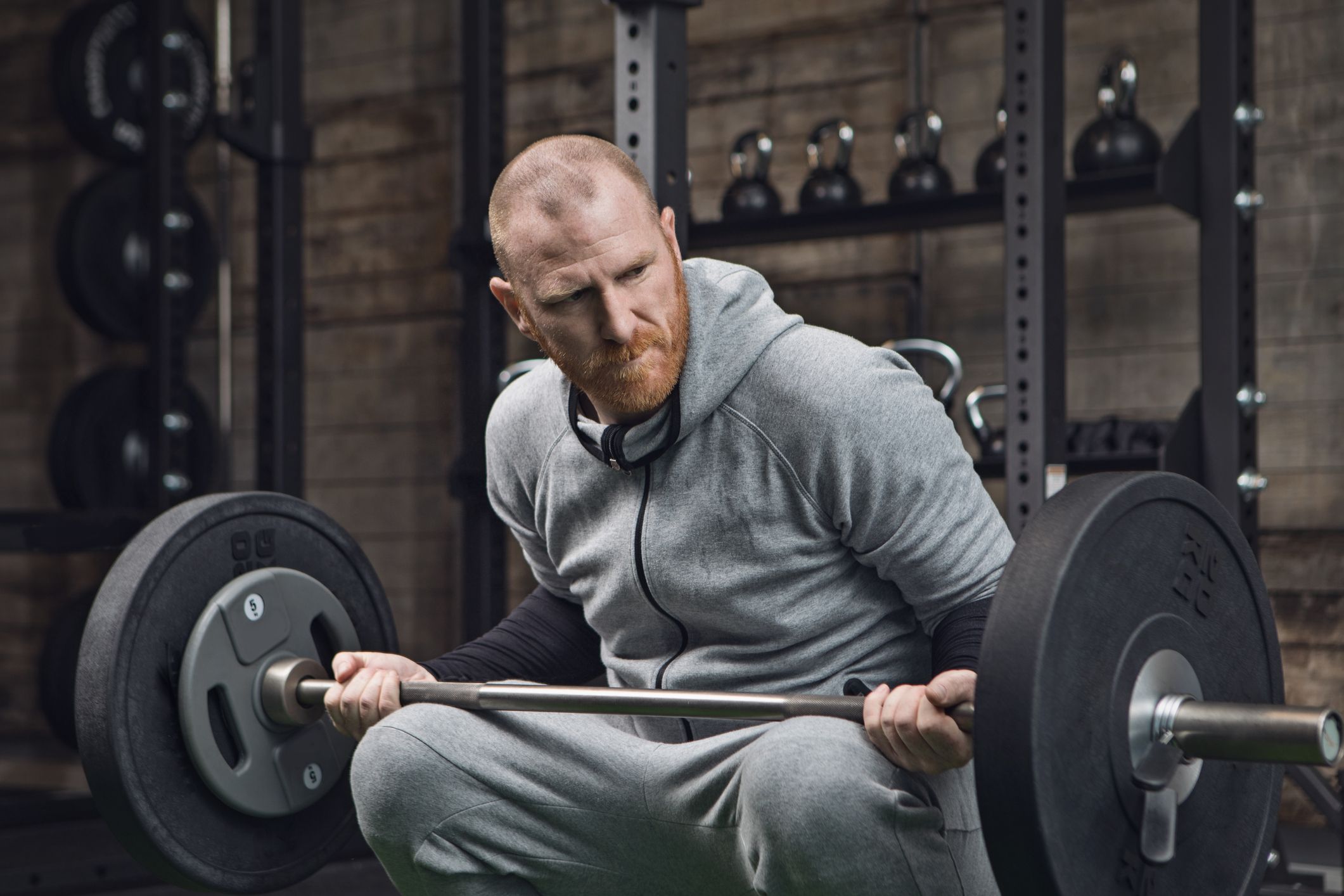Water-rich foods are your secret weapon in losing weight. In this way they will help you get a low body fat percentage and stay slim for a lifetime.
Studies show that a person eats an average of between 1.5 and 2 kilograms of food a day. 1
What happens if you eat significantly less?
Anyone who has ever tried to lose weight according to the FDH principle (“Eat-the-Half”) probably knows this: You get more and more hungry until you lose control.
Anyone who constantly eats too little can prepare for binge eating sooner or later.
This is related to the mechanisms by which your body signals “I’m hungry” or “I’m full”.
Sustainable fat loss works best when you are able to take control of these mechanisms.
Why do water-rich foods fill you up best?

You probably already know how fat loss works: You need a calorie deficit – you can burn more calories than you eat.
Why do many people get fatter and fatter when they listen to their natural feeling of satiety?
This question can only be answered if we take a look at our “modern” diet – and how satiety is created.
Your stomach does not have a built-in calorie counter.
That is why it does not trigger a feeling of satiety as soon as you have eaten a certain amount of calories.
It’s a pity, because that would be pretty handy. Finally, you could save yourself the calorie counting.
Short-term satiety is mainly caused by the stretching of the stomach wall.
More precisely, the stomach distension provides a hormonal signal. And that switches the switch in your brain from “I feel hungry” to “I feel full”.
Persistent satiety is mainly caused by protein-containing foods.
So to fill up quickly , you need to eat enough to stretch your stomach wall. To stay full for a long time, you also need protein.
The best way to stretch the stomach is with high-fiber foods with plenty of water.
Because water is heavy and has a lot of volume. If you want to lose weight as quickly as possible without feeling hungry, you should eat your fill of water-rich foods at every meal.
Why do foods with lots of water accelerate fat loss?
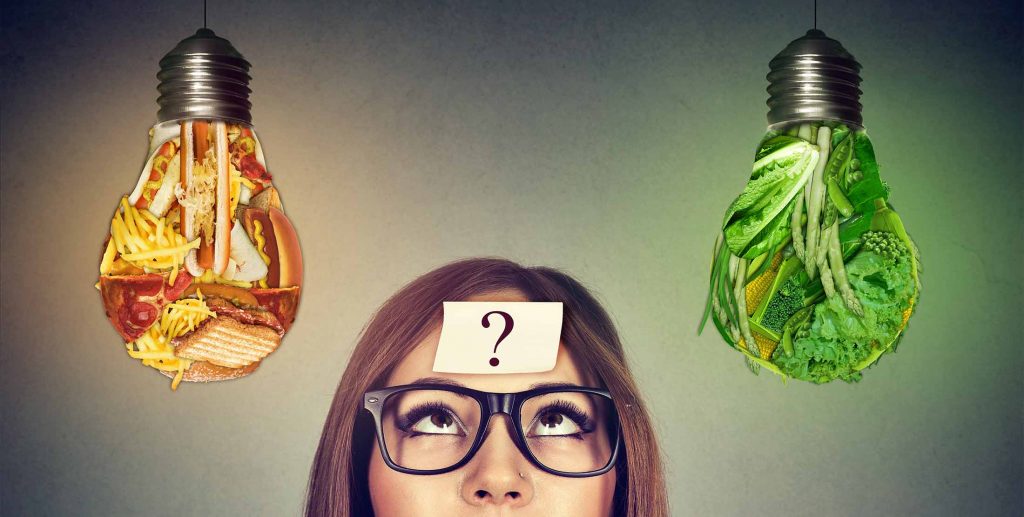
If you want to be really full AND slim with every meal, you only need to observe the following principle:
Foods with a lot of water are lower in calories than foods with little water.
This becomes clear with a simple example:
- 100 grams of pecans contain 690 calories
- 100 grams of strawberries contain 32 calories
Both are healthy foods. But:
You would have to eat 21 times the mass of strawberries to cover the calorie content of the pecans.
The filling stomach dilatation begins when you eat about 500 grams. Now it is also clear why water-rich foods are part of it for weight loss.
Fruits and vegetables contain a lot of water.
If you want to lose weight and stay slim, you should eat a lot of vegetables and fruit.
That is why we recommend our clients to eat at least 50% vegetables and some fruit with every meal (see “Looking Good Naked Teller”).
Nature leaves you a huge choice. In the next section you will get an overview of water-rich foods that fill you up and save calories.
Which foods contain the most water?
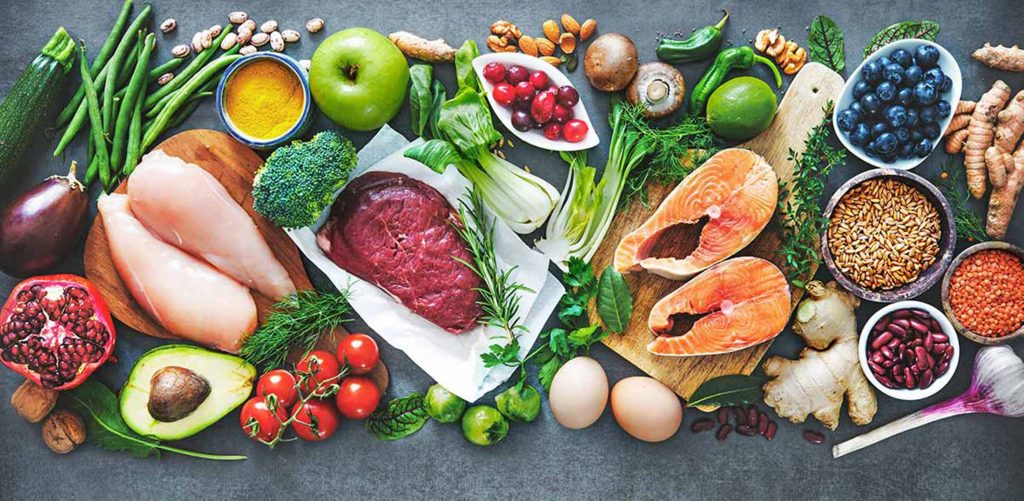
In general, all kinds of vegetables, salads, mushrooms, berries and low-sugar fruits consist primarily of water:
- Fresh vegetables contain 90 to 96 percent water and therefore only about 15-30 kcal per 100 g.
- With mushrooms behaves it is similar.
- Many berry varieties contain around 80-90 percent water, a little more carbohydrates, but also a lot of very valuable fiber. They provide around 40 kcal per 100 g.
- Fruits also contain mostly water, but also a little more carbohydrates or sugar, and are 50 to 60 kcal per 100 g.
- Lean curd cheese, Skyr and cottage cheese consist of around 80 percent water, provide a lot of protein and contain only 75-100 kcal per 100 g.
- Lean meat , fish and poultry contain 70 to 80 percent water, lots of protein and only 100 to 120 kcal per 100 g.
Those who want to lose weight can eat their fill of these foods.
If you want to know exactly, take a look at the chart hits in the next section.
Water-rich foods table: The top 70 charts
Which foods are particularly rich in water? In the following table you will find the top 70 foods with lots of water.
| Food | Water content | Calories (100 g) |
|---|---|---|
| Iceberg lettuce | 96% | 14 kcal |
| Lettuce | 96% | 13 kcal |
| Celery | 95% | 16 kcal |
| Pok Choi | 95% | 13 kcal |
| Radishes | 95% | 16 kcal |
| Radish | 95% | 16 kcal |
| Cucumber | 95% | 15 kcal |
| Zucchini | 95% | 17 kcal |
| romaine lettuce | 95% | 17 kcal |
| Chicory | 95% | 17 kcal |
| Tomatoes | 95% | 18 kcal |
| Chinese cabbage | 94% | 16 kcal |
| Pickles | 94% | 12 kcal |
| Bamboo shoots | 94% | 19 kcal |
| Paprika (green) | 94% | 20 kcal |
| Endives | 94% | 17 kcal |
| Pumpkin | 94% | 20 kcal |
| Rhubarb | 94% | 21 kcal |
| Asparagus (white) | 93% | 20 kcal |
| Radicchio | 93% | 23 kcal |
| Cherry tomatoes | 93% | 13 kcal |
| Field salad | 93% | 21 kcal |
| Rucola | 93% | 18 kcal |
| Mangold | 93% | 19 kcal |
| Sauerkraut | 93% | 25 kcal |
| Mushrooms | 92% | 22 kcal |
| Green beans | 92% | 16 kcal |
| Aubergine | 92% | 25 kcal |
| Paprika (red) | 92% | 31 kcal |
| White cabbage | 92% | 25 kcal |
| Cauliflower | 92% | 25 kcal |
| Paprika (yellow) | 92% | 27 kcal |
| Galia melon | 92% | 24 kcal |
| Watermelon | 92% | 30 kcal |
| Spinach | 91% | 23 kcal |
| Asparagus (green) | 91% | 20 kcal |
| Star fruit | 91% | 31 kcal |
| Kohlrabi | 91% | 27 kcal |
| Wirsing | 91% | 27 kcal |
| Strawberries | 91% | 32 kcal |
| Leek | 91% | 27 kcal |
| Grapefruit | 91% | 32 kcal |
| Spirulina algae | 91% | 26 kcal |
| Pomelo | 90% | 30 kcal |
| Red cabbage | 90% | 31 kcal |
| Cantaloupe melon | 90% | 34 kcal |
| Sugar snap peas | 90% | 31 kcal |
| Fennel | 90% | 31 kcal |
| Onions | 90% | 25 kcal |
| Chanterelles | 90% | 38 kcal |
| Spring onion | 90% | 32 kcal |
| Honeydew melon | 90% | 36 kcal |
| Okra | 90% | 33 kcal |
| Broccoli | 89% | 28 kcal |
| Lemons | 89% | 29 kcal |
| Carrots | 88% | 41 kcal |
| Peaches | 88% | 39 kcal |
| Papaya | 88% | 43 kcal |
| Celery bulb | 88% | 17 kcal |
| Gooseberries | 88% | 44 kcal |
| Nectarines | 88% | 44 kcal |
| Beetroot | 88% | 43 kcal |
| Plums | 87% | 46 kcal |
| Kale | 87% | 28 kcal |
| Alaska pollock | 87% | 56 kcal |
| Orange | 87% | 47 kcal |
| Apricots | 86% | 48 kcal |
| Blueberries | 86% | 48 kcal |
| Pineapple | 86% | 50 kcal |
| Brussels sprouts | 86% | 43 kcal |
The list could easily be expanded. A nice tool with many filter functions is the nutrition app “Nutritional Check” (iOS).
One point is important:
I’m not saying that you should ONLY eat foods rich in water.
The good fats from fatty sea fish (or fish oil capsules), nuts or healthy oils provide you with vital nutrients as well as high-quality sources of protein.
If you’re doing proper strength training (or other high-intensity exercise), you should also be eating good sources of carbohydrates: potatoes, quinoa, oatmeal, and so on.
By the way, there are still people who think that enjoyment and weight loss are a contradiction in terms.
This is how you combine water-rich foods to lose weight with pleasure
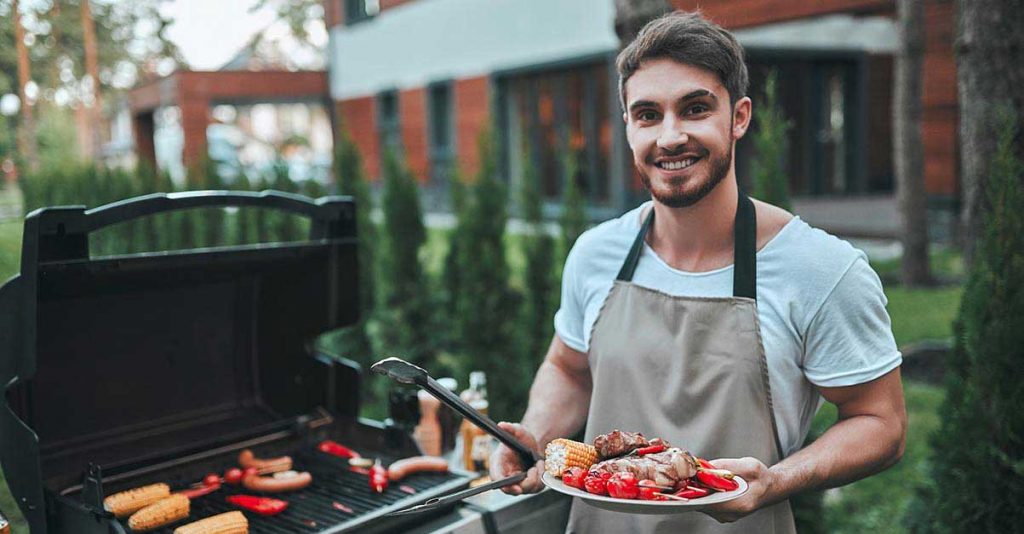
With a little experimentation you can relatively quickly find meals that you like, fill you up AND help you lose weight.
Soups, salads and stews are also among my favorites, as are shakes and a combination of grilled vegetables and steak (or grilled tofu, for the vegans).
They are all high in foods with lots of water.
I’ve already shared my favorite recipes in different articles here on the blog:
These recipes (or variations of them) have been part of my daily menu for years.
Here’s another interesting point …
Can’t you just drink water to fill yourself up?
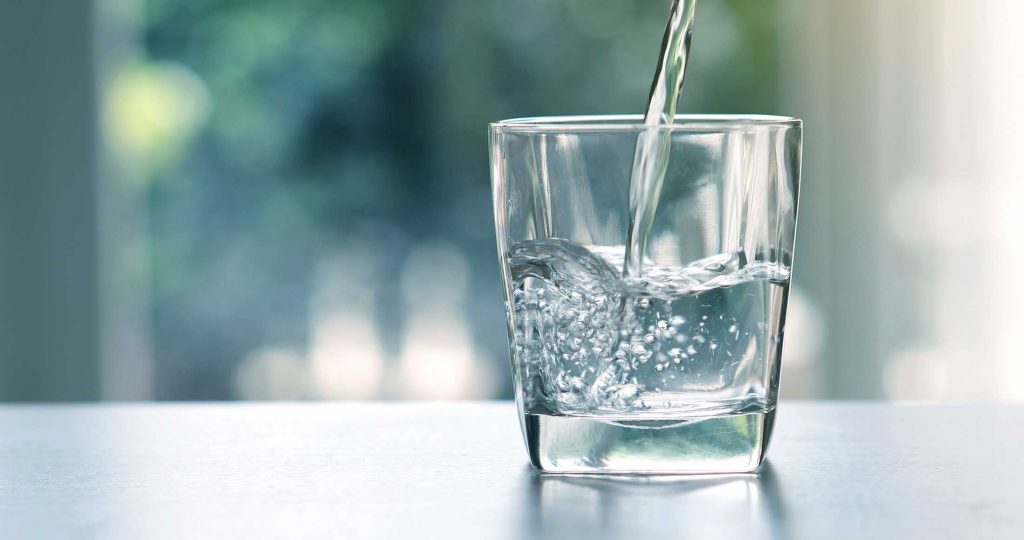
Actually, water should come first in the table of water-containing foods: 100% water content, 0 kcal.
Here’s the catch:
You cannot simply drink water with your meal and expect the same effect as with water-rich foods.
This has to do with the fact that drinks don’t stay in your stomach that long. Before the stomach distension could lead to a satiety signal, the water is already on its way to the intestines.
Water only saturates if it stays in the stomach long enough.
For this it must be bound. Foods with lots of water serve this purpose. There the water is locked in the cells – and is only slowly released during the digestive process.
The title of this study gets right to the point. 4
The water intake from food, but not from drinks, is related to a lower body mass index and waist circumference in free living people.
In a nutshell:
If you want to lose weight, you should eat foods with plenty of water.
Those who continue to eat highly processed and / or high-calorie foods cannot compensate for this by simply drinking a lot of water.
FAQ: Frequently asked questions and answers about foods rich in water
Which fruit contains the most water?
Galia melon is one of the top 10 fruits with the highest water content (92% water content ), Watermelon (92%), star fruit (91%), strawberries (91%), grapefruit (91%), pomelo (90%), honeydew melon (90%), lemons (89%), peaches (88%) and Papaya (88%).
This table lists other types of fruit with a lot of water.
Is a drink a food?
Food is all edible and drinkable food, as well as water. An important criterion for a food is that it contains macronutrients.
Drinking water does not contain any macronutrients or calories, but it does contain essential minerals. Therefore it is counted as a food.
Beverages mainly contain water, and sometimes food components. Therefore a drink is a food.
How much water do tomatoes have?
Tomatoes consist of 95% water. Fun fact: from a botanical point of view, they do not belong to vegetables but to fruits. More on this in this article.
Conclusion
Fat loss is based on a calorie deficit, of course.
Calorie deficit. No wonder that this term causes stress and feelings of deficiency in many people – who wants to live in deficit ?
This idea is a classic fallacy:
Losing weight does not mean living in shortages, but in abundance.
Conversely, it becomes a shoe: Most people who have lost control of their abdominal girth have so far lived in shortages: They lack water-rich foods.
And you should remedy this deficiency:
Lean people consume an abundance of water-based foods.
It is good if you approach the change with the necessary calmness. Because believe me, it can be really fun.
When you buy groceries, you just try to increase the proportion of food that is over 80% water content.
This makes the matter of the calorie deficit a lot easier.
And the end result is lower body fat.

